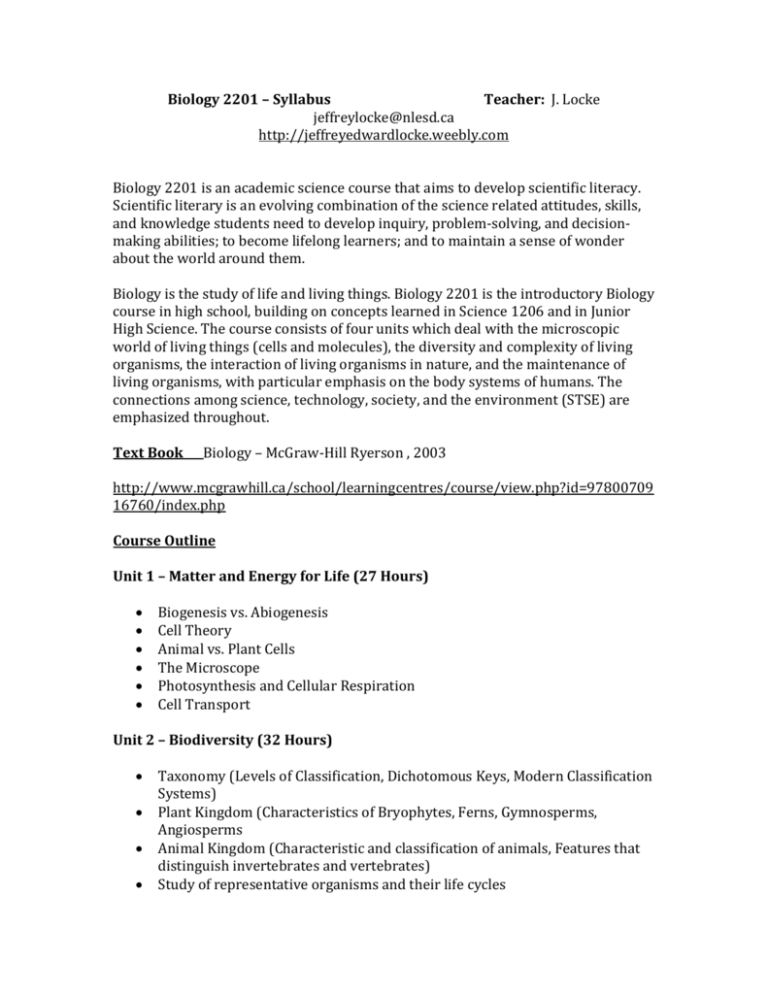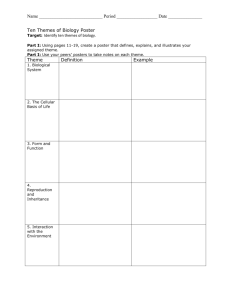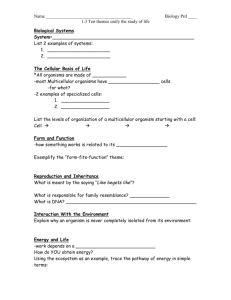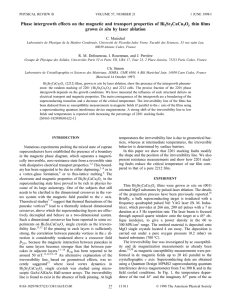File - Jeffrey Locke's Student Support web page
advertisement

Biology 2201 – Syllabus Teacher: J. Locke jeffreylocke@nlesd.ca http://jeffreyedwardlocke.weebly.com Biology 2201 is an academic science course that aims to develop scientific literacy. Scientific literary is an evolving combination of the science related attitudes, skills, and knowledge students need to develop inquiry, problem-solving, and decisionmaking abilities; to become lifelong learners; and to maintain a sense of wonder about the world around them. Biology is the study of life and living things. Biology 2201 is the introductory Biology course in high school, building on concepts learned in Science 1206 and in Junior High Science. The course consists of four units which deal with the microscopic world of living things (cells and molecules), the diversity and complexity of living organisms, the interaction of living organisms in nature, and the maintenance of living organisms, with particular emphasis on the body systems of humans. The connections among science, technology, society, and the environment (STSE) are emphasized throughout. Text Book Biology – McGraw-Hill Ryerson , 2003 http://www.mcgrawhill.ca/school/learningcentres/course/view.php?id=97800709 16760/index.php Course Outline Unit 1 – Matter and Energy for Life (27 Hours) Biogenesis vs. Abiogenesis Cell Theory Animal vs. Plant Cells The Microscope Photosynthesis and Cellular Respiration Cell Transport Unit 2 – Biodiversity (32 Hours) Taxonomy (Levels of Classification, Dichotomous Keys, Modern Classification Systems) Plant Kingdom (Characteristics of Bryophytes, Ferns, Gymnosperms, Angiosperms Animal Kingdom (Characteristic and classification of animals, Features that distinguish invertebrates and vertebrates) Study of representative organisms and their life cycles Unit 3 – Maintaining Dynamic Equilibrium I (42 Hours) Homeostasis, temperature regulation in humans Circulatory System (Heart, Blood, Functions, Diseases) Respiratory System (Structure and Function, Respiratory Diseases, Environmental Effects on the Respiratory System) Digestive System (Structure and Function, Nutrients, Fitness and Nutrition, Digestive Diseases) Excretory System (Structure and Function, The Nephron, Disorders of the Excretory System) Immune System (Antibodies and antigens, the Immune Response, Autoimmune Diseases) Unit 4 – Interactions Among Living Things (10 Hours) Population Growth (Factors that affect, limiting factors, growth patterns) Human Population Growth and the Demographic Transition Global Population Control and Sustainability Course Evaluation Test & Quizzes – 25% Performance Assessment – 25% Labs & Assignments - 15% Unit Projects – 5% Homework/Portfolio’s – 5% Midyear Exam – 15% Final Exam – 35% Note that the midyear exam tests all course outcomes to that point. The final exam will test all outcomes for the entire course. Other Links Department of Education Curriculum Guide for Biology 2201 http://www.ed.gov.nl.ca/edu/k12/curriculum/guides/science/index.html#bio2201 Science Resource and Support Documents – Senior High http://www.ed.gov.nl.ca/edu/k12/curriculum/documents/science/highschool.html








